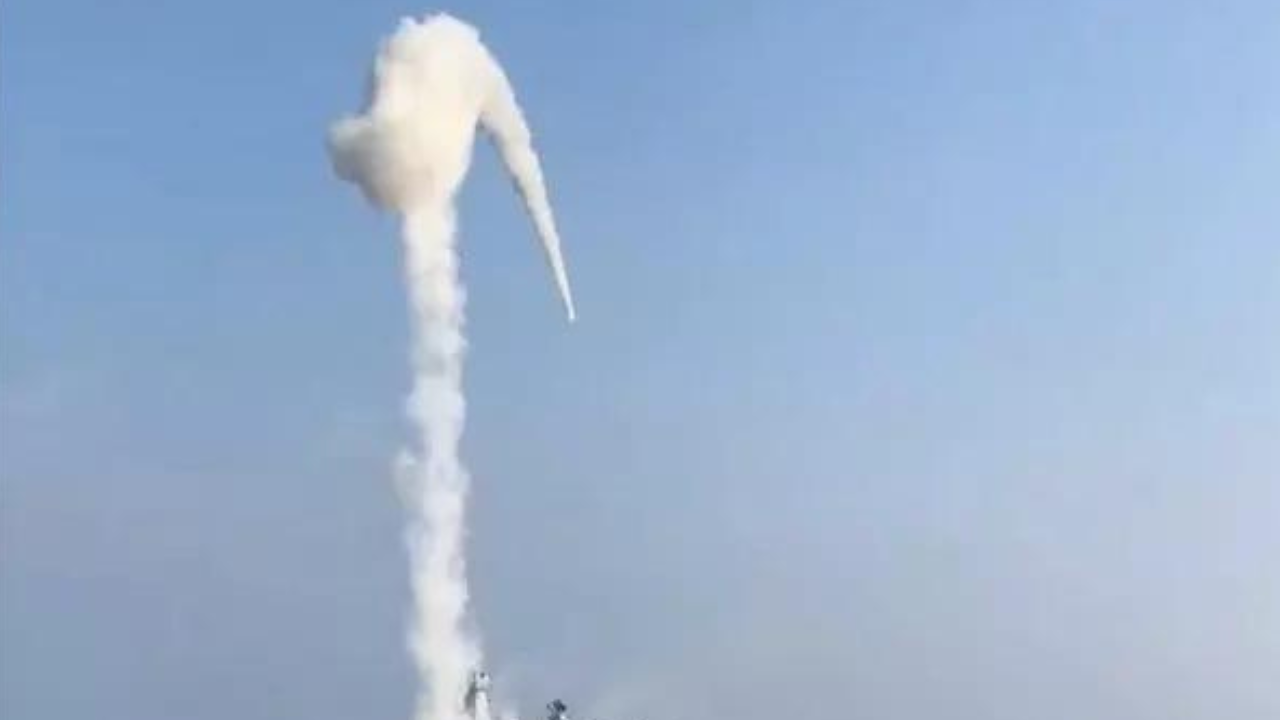PUNE: Navy Chief Admiral R Hari Kumar Monday said that the Brahmos supersonic cruise missile will be the primary weapon of the Indian Navy, replacing the old missile system acquired from other countries.
His remarks come soon after the Cabinet Committee on Security (CCS) cleared the deal for over 200 BrahMos missiles under a ₹19,000 crore contract set to be signed on March 5.
While talking to the media on the sidelines of the closing ceremony of the Defence expo in Pune, the Navy Chief said, “BrahMos will be our primary weapon now as the surface-to-surface missile weapon. The Air Force and the air fighters will probably have that as the primary air-to-surface weapon. This has evolved in range, in capabilities, in its lethality, and so on. So, this is going to be the mainstay for some time. That is why we are replacing all old missiles with this. And we are installing the BrahMos. Now, we have the expertise to install it in a speedy time.”
Highlighting that BrahMos is made in India, the CNS said that the missile is “a great advantage”.
“It is a very potent missile, and it has been evolving also, in range capability and so on. So the fact is that it is made in India, so we are not dependent on anybody else. It can be repaired, and spares are available. So it’s a great advantage,” he said
“In the current and future security paradigm, concerns about the proliferation of sensitive technologies like Weapons of Mass Destruction (WMD), missiles, and drones have assumed new relevance because of non-state actors and rogue states which are using such technologies for an asymmetric advantage, like we see today in West Asia,” said the Navy Chief.
“The Indian Navy remains at the forefront of safeguarding crucial global trade routes and India’s maritime interests with the ongoing anti-drone and anti-piracy operations both in the North and the West Arabian Sea from missile attacks and pirates. We will not hesitate to deploy the full spectrum of capabilities to ensure the safety, security, and stability of global commons or the Indian Ocean region,” he added.
The CNS said that we are currently transitioning from a contested present into an uncertain future. This contest manifests not only as conflict but also as intense competition across the entire spectrum.
“These are also aggravated because of the non-state actors, state-sponsored actors, business and interest groups using disruptive technologies and social influences,” he added.
The navy chief reiterated that Atma Nirbharta (self-reliance) in defence is not only an economic imperative but also a strategic requirement to retain strategic autonomy.
“Our transition from a buyer’s navy to a builder’s navy helped not only in supporting and promoting the defence industry but has also resulted in economic growth and industrial skilling. Our current force level is about 130 plus ships and 250 aircraft. We anticipate that it will grow to about 175 by 2035 and about 400 aircraft. While we seek numerical growth, it will enhance our capability and tech induction to the next level,” he added.
His remarks come soon after the Cabinet Committee on Security (CCS) cleared the deal for over 200 BrahMos missiles under a ₹19,000 crore contract set to be signed on March 5.
While talking to the media on the sidelines of the closing ceremony of the Defence expo in Pune, the Navy Chief said, “BrahMos will be our primary weapon now as the surface-to-surface missile weapon. The Air Force and the air fighters will probably have that as the primary air-to-surface weapon. This has evolved in range, in capabilities, in its lethality, and so on. So, this is going to be the mainstay for some time. That is why we are replacing all old missiles with this. And we are installing the BrahMos. Now, we have the expertise to install it in a speedy time.”
Highlighting that BrahMos is made in India, the CNS said that the missile is “a great advantage”.
“It is a very potent missile, and it has been evolving also, in range capability and so on. So the fact is that it is made in India, so we are not dependent on anybody else. It can be repaired, and spares are available. So it’s a great advantage,” he said
“In the current and future security paradigm, concerns about the proliferation of sensitive technologies like Weapons of Mass Destruction (WMD), missiles, and drones have assumed new relevance because of non-state actors and rogue states which are using such technologies for an asymmetric advantage, like we see today in West Asia,” said the Navy Chief.
“The Indian Navy remains at the forefront of safeguarding crucial global trade routes and India’s maritime interests with the ongoing anti-drone and anti-piracy operations both in the North and the West Arabian Sea from missile attacks and pirates. We will not hesitate to deploy the full spectrum of capabilities to ensure the safety, security, and stability of global commons or the Indian Ocean region,” he added.
The CNS said that we are currently transitioning from a contested present into an uncertain future. This contest manifests not only as conflict but also as intense competition across the entire spectrum.
“These are also aggravated because of the non-state actors, state-sponsored actors, business and interest groups using disruptive technologies and social influences,” he added.
The navy chief reiterated that Atma Nirbharta (self-reliance) in defence is not only an economic imperative but also a strategic requirement to retain strategic autonomy.
“Our transition from a buyer’s navy to a builder’s navy helped not only in supporting and promoting the defence industry but has also resulted in economic growth and industrial skilling. Our current force level is about 130 plus ships and 250 aircraft. We anticipate that it will grow to about 175 by 2035 and about 400 aircraft. While we seek numerical growth, it will enhance our capability and tech induction to the next level,” he added.
